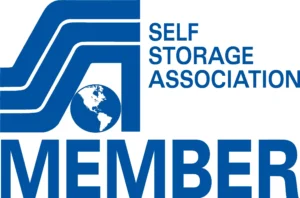As retirees start their new chapter of life, downsizing becomes an important step to ensure comfort, convenience, and peace of mind. Whether they’re looking to declutter their home, optimize space, or streamline possessions, this checklist is a trusted companion. Our downsizing checklist serves as a comprehensive roadmap, guiding retirees through each stage of the process with ease and clarity.
With a retirement downsizing strategy in place, retirees can effectively assess their current living situation, identify priorities, and make informed decisions about what to keep, donate, or discard. By breaking down the downsizing journey into manageable tasks, our checklist empowers retirees to take control of their environment and create a space that aligns with their lifestyle and needs.
Welcome to our guide on downsizing for retirees, where we’ll explore practical strategies and tips to simplify the transition to a more manageable living space. There are numerous factors to consider before deciding whether this is appropriate for your lifestyle and well-being. Consider your current family needs, retirement plans, and monthly cash flow.
Importance of Downsizing Checklist for Retirees
As retirees start their next chapter of their lives, downsizing becomes a crucial step in simplifying their living spaces and adapting to a new lifestyle. A downsizing checklist serves as a guiding tool, helping retirees methodically declutter and organize their belongings. This checklist is essential in ensuring nothing is overlooked during the downsizing process, from sorting through possessions to planning the layout of the new space.
By following a retirement downsizing strategy outlined in the checklist, retirees can efficiently manage their belongings and create a comfortable living environment. Moreover, a well-executed downsizing checklist alleviates stress and anxiety associated with moving, enabling retirees to focus on embracing the next chapter of their lives with excitement and positivity. Overall, the importance of a downsizing checklist for retirees cannot be overstated, as it facilitates a smooth transition to a more manageable and fulfilling living situation in retirement.
If you are ready to downsize, here are the five checklists you will need to take care of everything in the downsizing process:
1. Paperwork checklist
First, store important documents in a safe deposit box or a fireproof safe. Second, scan and upload them to the cloud to digitalise them. Third, inform your loved ones where to find and how to access all these important documents.
Here is a list of what paperwork to ensure is in order:
- Taking care of the important paperwork such as notifying your insurance companies, lawyer, accountants, licenses, banks, and other companies that there will be a change in address.
- Copies of the income tax return from the last seven years and a list of checking, savings, and credit card account numbers.
- Trusts, wills, home documents or amendments
- Letters that address any personal issues (e.g., your preferences for any end-of-life desires such as burial or cremation, and personalised comments to friends or family)
2. Change of address checklist
When you are moving to a new home, your address will inevitably change. Send a change of address card to all the places you do business with services you use, and groups you belong to so that they know how to contact you at your new address.
Here is a list of institutions to inform about when you are changing your address:
Financial Institutions
- Banks
- Investment brokers
- Insurance companies
- Lenders
- Credit reporting systems
Government Institutions
- Department of Motor Vehicles
- Business licence office (if you run a small or home business)
- Postal Service
- Voter Registration
- Aadhar Card
Memberships
- Professional associations
- Publications
- Civic organisations
- Religious Institutions
- Health clubs
- Social or country clubs
- Magazine or Newspaper subscriptions
Service Providers
- Accountants
- Attorneys
- Cleaning Services
- Physicians
- Veterinarians
- Internet
- Gas & Electricity
If you have a strong online presence and find it safe for your personal information you may also need to update your information on the platforms, you use.
3. Packing checklist
Uprooting your life is never easy, whether you are living independently and looking to downsize, relocating to a senior living community with your spouse, or simply moving closer to loved ones.
Here are some pointers to make the transition easier for everyone:
- Invite others to assist with packing chores, such as family members, friends, a packing specialist, or a moving company. Moving will be simple and straightforward with everything labelled.
- Obtain markers and labels. Label each box with the destination room/area in the new house.
- Make an Inventory list. Now is the time, to be honest with yourself: do you have enough space to keep everything you want to keep? If not, consider renting a storage unit for oversized items or other belongings that will not fit in your new home.
- Pack “open first” box(es). This includes boxes that contain bedding and food items etc.
- Purchase a large quantity of non-perishable food so that you do not have to worry about cooking or preparing elaborate meals while settling into your new home.
- Purchase the toiletries you will need while moving so that you are well prepared.
After going through your belongings and donating, selling, or giving away everything you can part with, you may still have more than your new home can accommodate. As previously mentioned, a storage facility may be exactly what you are looking for. However, how do you decide what to keep and what to put away? Here are two categories to consider:
- Mementoes/Memorabilia
Our memories become increasingly important as we age. A small storage unit is a secure place to keep sentimental items that will not fit in your new living space.
- Large Items
Large electronics, valuable furniture, and outdoor equipment are all reasonable candidates for storage. Most units can be rented monthly, temporary storage is an option.
4. Pre-moving day checklist
Moving day is now quickly approaching. It is always ideal to have one or two family members to help around and conduct final checks:
- Make a moving binder with key contacts, estimates, receipts, and a list of what you are taking with you.
- Confirm final details with your mover — or moving coordinator.
- Plan utility disconnections.
- Plan your post-move-out cleaning services.
- Ensure that you have a written contract from the moving company and a clear understanding of coverage for lost or damaged belongings.
- Set a firm time for the moving company to arrive at both the old and new addresses.
- Obtain a firm arrival time for the moving company at both the old and new residences.
- Determine payment options: credit card or check.
It is also great if you could have final meals in your home, home cooking is a bit of a stretch but order in meals and reminisce about the old times with family. Ending the day with positive feelings can help with feeling less anxious and emotional about the new change.
5. Moving day checklist
Here are some pointers to help you get ready for your moving day:
Make plans for a safe moving day –
Moving day can quickly devolve into chaos. Prioritize your safety by employing proper lifting techniques, establishing a clear path in and out of the house, and avoiding heavy boxes.
- Make someone responsible for meeting the movers at your new home. Check that they have a key and that the community manager is expecting you.
- Examine inventory lists.
- Make certain that all boxes are properly labelled.
- Inquire with a neighbour about keeping an eye out for mail that may arrive after your move.
- If you are transporting a pet, make sure to pack food and medications to ensure a safe journey and arrival.
Make an emergency kit
Certain items must be easily accessible throughout your relocation. Make an essentials bag with constant access to important items such as:
- Sleepwear
- Bedding/medications
- Toiletries
- Cleaning materials
- Provisions for the kitchen and meals
- Pack a suitcase with your own clothes and medications so that you will be ready for the first day after your first night.
- Pack valuables and rarely used items that you have chosen to pack yourself.
- Use the “open first” boxes to immediately set up the bedroom and bathroom
Plan to spend a few days unpacking and organising. If possible, enlist the assistance of another person. Work as quickly as possible to make your new home feel welcoming.
Take some time to reflect – You will be going through bins full of treasured memories from a lifetime. It is perfectly acceptable to pause and reflect on those happy times in your life. It is okay to acknowledge that change can be difficult. When approaching downsizing, it can help to think about the additional time you will have to spend with friends and family or to do the hobbies you love most when you are not having to deal with as much home maintenance.
Always remember to stay connected. Plan a get-together with your friends and family. Moving to a new location can be stressful, so having some familiar faces visit or call from time to time will help.
Finally, the date marked on your calendar has arrived! Do not wait until the last minute to schedule your move. Call your moving company a few days before your scheduled move date to confirm your move date. Moving out of state may appear to be an arduous task. However, there are things you can do ahead of time to make the process go more smoothly.
Final Words on Downsizing Checklist
By following a retirement downsizing strategy outlined in the checklist, retirees can systematically declutter their belongings and prioritize essentials. The checklist ensures that no important things are overlooked during the downsizing process, from sorting through possessions to planning the layout of the new home.
Ultimately, the downsizing checklist empowers retirees to create a comfortable and organized living environment tailored to their needs, facilitating a smooth transition into retirement living. With the guidance of the downsizing checklist, retirees can confidently downsize their homes and embark on this exciting new phase of life with peace of mind and readiness for new adventures.
FAQs
A: A downsizing checklist helps retirees systematically navigate the process, ensuring a smoother transition to a smaller living space.
A: Prioritize essentials, sentimental items, and practical belongings that align with your new lifestyle in a smaller home.
A: Consider functionality, sentimentality, and practicality to make informed decisions about what items to keep, donate, or discard.
A: Downsizing offers financial savings, reduced maintenance, and a simpler lifestyle, allowing retirees to focus on what truly matters.
A: Break the task into manageable sections, declutter room by room, and enlist help from family or friends to streamline the process.
A: Yes, professional downsizing services can provide valuable assistance in planning, organizing, and executing a successful downsizing transition.
A: Prioritize accessibility, proximity to amenities, and a layout that accommodates your lifestyle while choosing a smaller living space.
A: Optimize storage with multifunctional furniture, utilize vertical space, and embrace minimalist storage solutions to maximize the available space.
A: Consider downsizing furniture to fit the new space, focusing on pieces that are functional, comfortable, and complement the smaller layout.
A: Give yourself time to adapt, focus on the positive aspects of downsizing, and cherish the opportunities a smaller home brings for a more relaxed and fulfilling retirement.







